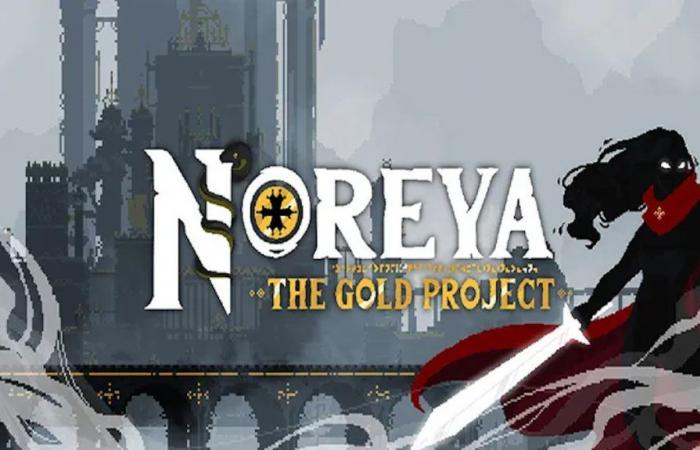Just a few days ago, on June 21, a 2D pixel art title was launched with an interesting metroidvania proposal that sought to capture the public who love this genre, and the magic that this art can give us with its graphics. This is how Noreya: The Gold Project came into our hands, made by a French studio called Dreamirl, which promised much more than it delivered.
The story starts off rather quickly, telling us that our protagonist, Kali, was struck down by a god in a war, and seeks revenge on him. To do this, we must collect the favors that the gods will give us, depending on the path we decide to follow: the God of Gold or the God of Light. Depending on our decisions, we unlock not only different skills in the tree we have, but also the possibility of taking different routes to reach our goal.
Although this seems huge when mentioned, the difference (on the map) between one path and the other is really small. We will have some extra rooms, and perhaps, on rare occasions, we will shorten the path to locations we want to reach faster. In order to unlock this path of light or gold, we will have to find certain structures where we will build the sanctuaries of one or another god, depending on the situation, and which will also serve as control or teleportation points later on.
By having more influence from one god over the other, that is, by having more statues or shrines erected, we will also be able to unlock more possible skills for that path. In a nutshell, it’s like a scale where we will put more beans on one side or the other, and depending on how much it tilts, how significant that side will be. Then, the skills can be purchased with points that we obtain by offering gold, the currency we obtain from enemies and objects, to either of the two gods. As we obtain skill points, the next one will be even more expensive.
Up to this point, there is nothing strange and far from a classic metroidvania… and there won’t be either. The title has a fairly extensive map with four different biomes that can be explored practically from the beginning, but, as expected, to advance in any of them we require specific skills that can only be obtained by progressing with the story (that is, you cannot you can buy). These 4 skills are typical of any game of the genre, such as wall jumping or dodging, and it really feels very bad not to have them from the beginning, because it makes the game unnecessarily difficult. It’s almost as if it was on purpose to increase the duration of it.
The puzzles that require skill in sliding across platforms, avoiding obstacles or turning on switches are fine, but they seem to be harder to solve just because of the decision to use very similar sprites for the environments you can navigate and the background of your screen. This often makes us stop and look in depth at whether we should jump over vegetation that apparently harms us, or if it is simply a set of harmless pixels.
The combat is not the strong point either, with movements limited to a single button to attack in a maximum combo of 3 sword blows, and a thin line that does not allow us to understand if at a safe distance we can attack the enemy or not. On several occasions I found myself hitting the void, because the enemy’s sprite and his hitbox were out of sync, and my attacks weren’t hitting him. However, we can perform downward and upward attacks, sometimes allowing it to be used as a mechanic for puzzles.
We will have a large number of skills, although many of them are improvements hidden under the tree. For example, those that refer to the maximum number of hits they can give us before dying; or the possibility of earning more gold from enemies. Despite this, the progress that we obtain after each death and as we advance with the battles does not seem unfair, encouraging us to progress in the story and not necessarily be farming gold for hours.
Finally, the enemies sometimes seem unfair, but none of them are impossible to beat. The combination of the above mentioned battles and the variety of enemy sizes makes us go into fights with great confidence, and in others it is completely the opposite. The bosses, on the other hand, are more interesting, thanks to the small changes in the attack patterns they have and, in many cases, to an additional mechanic that exists to beat them.
On the balance, Noreya: The Gold Project is a mid-table title, with very imprecise but pleasant gameplay, which does not contribute anything new to the genre but has room to expand in the future. Let’s hope it makes more progress as the days go by and surprises us with new mechanics (at least in combat, which is the weakest).






